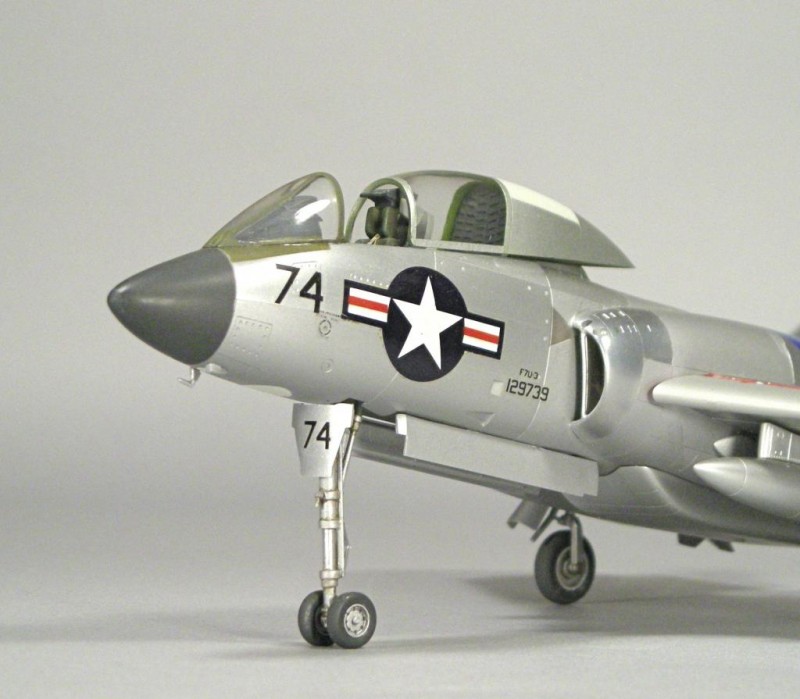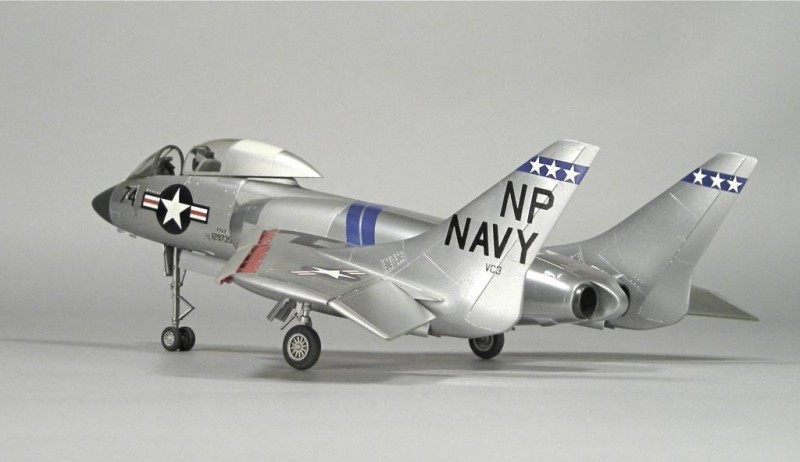Hi everybody,
First off i want to apologize in advance to everybody who has seen this model before. One of the first bare metal schemes i did i was happy with and i think it was my 3rd Fujimi F7U Cutlass.
-

Since i first posted this 9 years ago, my feelings about the Cutlass have evolved. This is an awesome model of a generally unloved and grossly misunderstood aircraft. Whether people loved it or hated it, it's best remembered as a design with too many great, high-tech, forward-thinking, but unproven technologies in one package. Had the Westinghouse engines performed as advertised, and had angled deck carriers been introduced sooner, perhaps historians would be kinder to the F7U. The plane's reputation was unfortunately cemented into the public conciousness by the spectacular film footage of Jay Alkire's ramp strike coming aboard HANCOCK. That accident had much to do with how Navy pilots were trained at the time and the behaviour of the Westinghouse afterburners on the engines. It's worth pointing out that when compared to the accident statistics of the F8U Crusader, the Cutlass actually comes off looking better, especially when the changeover to angled decks was made. I didn't know this until fairly recently, but the "Gutless" moniker came along later in the programme when the Sparrow Missile and its associated pylons and fire control system was added to the plane.
-

The model was largely out of the box; i built it back in 1993 or so, but i replaced the wingtip lenses with clear sprue, filed and sanded to shape, i added masking tape seatbelts, and i added little rectangular strips to the recessed areas where the retracted slats go; i cut away the corresponding rectangular ares embossed into the slats to match.
The fit of the model was good, although i eschewed the intake trunking since i felt it complicated splicing the forward fuselage to the aft fuselage. Its this area on the model where the fit of parts is frankly kind of vague but the rest of the model fit together well.
Early F7U-3s were delivered to the fleet in (i think) a clear coat applied over bare metal, with several sections painted in aluminized lacquer (my guess is those were either magnesium, or the Vought "Metallite" composite wood-metal sandwich). I used SnJ for the shiny areas and Scalecoat Aluminum (a model railroad paint) for the aluminized lacquer areas. The Blue stripes were done with Model master GM or Ford Engine Blue.
[pic 7]
--- pic8 not found ---
Composite Squadron 3 was based at NAS Moffett Field, literally a few blocks from where i used to live. VC-3 was involved in something called "Project Cutlass" which IIRC was the initial creation of a cadre of F7U Cutlass Instructors who would then go on to train would-be F7U pilots. This slightly pre-dates the Navy invention of the Replacement Air Group, or "RAG".
Former Astronaut Wally Schirra is the only pilot i ever knew of who liked flying this plane. The Navy re-assigned these fighters to land based attack squadrons as soon as they could. The Naval Parachute Unit at El Centro liked the high ground clearance offered by the design and it's worth noting that an F7U Cutlass performed the first supersonic weapons drop. The plane was reportedly almost indestrucible from a structural integrity standpoint, and reportedly very maneuverable in a turning fight.
Enjoy,
-d-
1 additional image. Click to enlarge.